Primary waves
Type of resources
Topics
Keywords
Contact for the resource
Provided by
Years
Formats
Update frequencies
-

P-wave and S-wave tomographic models for the Northeast Africa region. They have been calculated using relative travel time tomography. For full details of method and models see the following papers: Civiero, C., Hammond, J. O. S., Goes, S., Fishwick, S., Ahmed, A., Ayele, A., Doubre, C., Goitom, B., Keir, D., Kendall, M., Leroy, S., Ogubzghi, G., Rumpker, G., Stuart, G. W. Multiple mantle upwellings beneath the Northern East-African rift system from relative P-wave traveltime tomography, Geochem. Geophys. Geosyst., doi:10.1002/2015GC005948 (2015) Civiero, C., Goes, S., Hammond, J. O. S., Fishwick, S., Ahmed, A., Ayele, A., Doubre, C., Goitom, B., Keir, D., Kendall, M., Leroy, S., Ogubzghi, G., Rumpker, G., Stuart, G. W. Small-scale thermal upwellings under the Northern East African rift from S-wave travel-time tomography, J. Geophs. Res. Doi:10.1002/2016JB013070 (2016). The geographical extent of the models is Latitude: 24.7S - 27.0N, Longitude: 25.4E - 57.2E, Depth: 0 - 900 km. See see hitcount files and papers for areas of reasonable resolution.
-
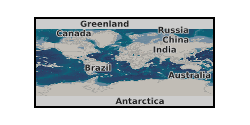
Dataset contains 3D synthetic seismic waveforms for axisymmetric global Earth velocity models. The waveforms were calculated using the finite difference approach with the PSVAxi algorithm (Jahnke, G et al., 2008. doi:10.1111/j.1365-246X.2008.03744.x). The Earthmodels are 1D and use PREM parameters except close to the core-mantle boundary (CMB) where 3D ultra-low velocity zones (ULVZs) are added to the PREM background model. ULVZ are thin layers of strongly reduced seismic velocities located at the CMB that have been observed in several regions of the Earth. The dataset models interaction of the seismic wavefield with ULVZ structure with varying elastic parameters (P-wave, S-wave velocity, density), location (location at source or receiver side along the great circle path), ULVZ length, shape (box, Gaussian, trapezoid) and height. Detailed description of the approach and the model space are given in Vanacore et al, (2016). Data format is SAC (Seismic Analysis Code). Vanacore, E.A., Rost, S., Thorne, M.S., 2016. Ultralow-velocity zone geometries resolved by multidimensional waveform modelling. Geophys. J. Int. 206, 659–674. doi:10.1093/gji/ggw114
-
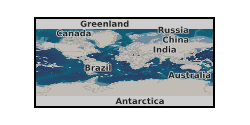
This excel spreadsheet contains P-wave and S-wave velocity and attenuation data calculated with a novel rock physics model for hydrate bearing sediments. The model has been published in: Marín-Moreno, H., S. K. Sahoo, and A. I. Best (2017), Theoretical modeling insights into elastic wave attenuation mechanisms in marine sediments with pore-filling methane hydrate, Journal of Geophysical Research: Solid Earth, 122(3), 1835-1847, doi:10.1002/2016JB013577.
-
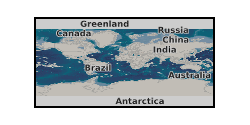
The dataset contains condensed results of seismic refraction survey, that can be regarded as “hard data”. Data files Syczyn-1_P.ASC and Syczyn-1_S.ASC represents tables obtained for line Syczyn-1, wave P and wave S respectively; Data files Syczyn-2_P.ASC and Syczyn-2_S.ASC represents tables obtained for line Syczyn-1, wave P and wave S respectively. Each file contains 4 columns: Record No. – sequential record identifier; Source location – distance from the beginning of the line to the (current) source point (in meters); Receiver location – distance from the beginning of the line to the given receiver (in meters); First Break – delay time between emission of the wave to its arrival at the given receiver point (seconds). Dataset is formatted in simple table, that can be imported to other seismic software for modelling velocity field. Different computing algorithms generate slightly different velocity models, so it can be useful to have hard data for comparison.
-
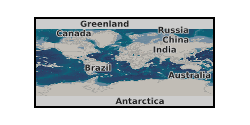
The dataset gather data from a dual experiment conducted to the study (i) the stress dependence of ultrasonic (elastic) waves and permeability of salt rocks, and (ii) the monitoring of controlled dissolution in an intact halite sample and a cracked (fractured) one. The tests were run in the high-pressure room-temperature (20°C) experimental setup for flow-through tests at the National Oceanography Centre, Southampton (NOCS) (Falcon et al. 2016). The rig consists of a triaxial vessel equipped with (i) ultrasonic sensors that allow measuring P- and S-wave velocities and their attenuation factors using the pulse echo method (McCann and Sothcott, 1992), and (ii) two rigs of electrodes embedded into the rubber sleeve of the pressure vessel for collecting electrical resistivity data that can be used to build up an electrical tomography of the sample (North el al. 2013). The rig has automatic control of both confining and pore pressure (ISCO EX-100D system). For the operating conditions and in homogeneous samples, the bulk electrical resistivity error is <1% for bulk resistivities <100 Ω m, increasing up to 5% with the degree of heterogeneity and above this resistivity value, at frequencies 1–500 Hz (North et al., 2013). Regarding the ultrasonic data, the technique and instrumentation used in this experiment provide velocity precision of ± 0.1% and accuracy of ± 0.3% (95% confidence), and attenuation accuracy of ± 0.1 dB cm-1 within the frequency range 300-1000 kHz (Best, 1992). The dataset presented here show the ultrasonic data at a single frequency of 600 kHz, obtained from Fourier analysis of broadband signals. Permeability to water and to N2 can be both determined with the aid of integrated flowmeters and pore pressure sensors both up- and downstream of the rock sample. The rock samples include: Pre-Cambrian salt (unknown well, Pakistan (source: www.likit.co.uk/)), Cambrian salt (unknown well, Tunguska Basin, Russia), Triassic salt (Arm Hill #1 well, NW Lancashire, UK), and Messinian salt (3A GN3 S02 well, core # 19, near Marianopoli, Sicily). 2.5 cm length, 5 cm diameter core plugs were extracted from precursor rocks, composition estimated by X-ray diffraction analysis, and connected porosity by He-pycnometry. Falcon-Suarez, I., North, L., Amalokwu, K., Best, A., 2016. Integrated geophysical and hydromechanical assessment for CO2 storage: shallow low permeable reservoir sandstones. Geophysical Prospecting 64, 828-847, http://doi.org/10.1111/1365-2478.12396. McCann, C., Sothcott, J., 1992. Laboratory measurements of the seismic properties of sedimentary rocks. Geological Society, London, Special Publications 65, 285-297, https://doi.org/10.1144/gsl.sp.1992.065.01.22. North, L., Best, A.I., Sothcott, J., MacGregor, L., 2013. Laboratory determination of the full electrical resistivity tensor of heterogeneous carbonate rocks at elevated pressures. Geophysical Prospecting 61, 458-470, https://doi.org/10.1111/j.1365-2478.2012.01113.x.
-
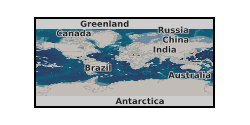
This dataset contains raw experimental high temperature and acoustic emission testing data on ‘Comiso’ limestone samples as outlined in "Castagna, A., Ougier-Simonin, A., Benson, P. M., Browning, J., Walker, R. J., Fazio, M., & Vinciguerra, S. (2018). Thermal damage and pore pressure effects of the Brittle-Ductile transition in Comiso limestone. Journal of Geophysical Research: Solid Earth, 123(9), 7644-7660.s, http://dx.doi.org/10.1029/2017JB015105". The data is provided in a .zip folder for 2 experiments that are accompanied by a README file for introduction. Files format are Microsoft Excel Worksheet (.xlsx) and data are tabulated. Each file contains the corresponding relevant sample’s details and each column of data is clearly labelled, units included. For each experiment, local time, corrected time, temperature (in degrees Celsius), acoustic emission amplitude (in decibels) and counts were recorded. Cylindrical samples of ‘Comiso’ limestone samples (Ragusa Formation; Sicily) were heat-treated to investigate the effects of thermal stressing on the limestone’s microstructure. In all tests, a controlled heating rate of 1 °C/minute was applied, keeping the specimen at the desired maximum temperature for 30 minutes to allow complete temperature equilibration followed by natural cooling (generally less than<1 °C/minute). The experiments were conducted on the Carbolite CTF12/75/700 tube furnace of the Rock and Ice Physics Laboratory of the University College of London between the 22nd and 28th February, 2016. The experiment were conducted by Drs A. Castagna and J. Browning, both responsible for the collection and interpretation of the data.
-
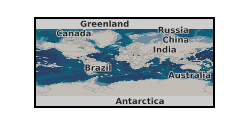
This dataset contains experimental hydrostatic testing data with ultrasonic surveys and acoustic emission data as outlined in "Panza, E., Agosta, F., Rustichelli, A., Vinciguerra, S. C., Ougier-Simonin, A., Dobbs, M., & Prosser, G. (2019). Meso-to-microscale fracture porosity in tight limestones, results of an integrated field and laboratory study. Marine and Petroleum Geology, 103, 581-595, https://doi.org/10.1016/j.marpetgeo.2019.01.043". The data is provided in a .zip folder containing 11 files, with 10 files for each mechanical tests and 1 containing all the geophysical data recorded and calculated; accompanied by a README file for introduction. Files format is Microsoft Excel Worksheet (.xlsx) and data are tabulated. Each file contains the corresponding relevant sample’s details, and each column of data is clearly labelled, units included. For each experiment, mechanical dataset recorded time, axial force, axial displacement, axial stress, confining displacement, confining pressure, axial strains A and B, circumferential extensometer, and internal temperature. Physical dataset recorded sample’s dimensions, density, compressional (P) wave arrival time and shear (S1, S2) wave arrival times; details of calculated velocities and elastic parameters are also given. Ten right cylindrical samples of limestone from the Altamura Formation sampled at Pontrelli Quarry were tested in hydrostatic compression at a range of confining pressures (Pc = σ1=σ2=σ3) from 0 to 50, or 80 MPa, at 2 MPa/min. Samples were cored either horizontal (H) or vertical (V) that is respectively sub-parallel and sub-orthogonal to bedding; the orientation is indicated in the sample’s ID. Ultrasonic velocity measurements were performed at Pc = 0, 1, 2.5, 5, 10 MPa, and then at steps of 10 MPa up to the maximum Pc value. Each sample was tested oven dried (ca. 12 hours at 40 °C followed by cooling in a desiccator for 1 hour; all prior to the hydrostatic compression). All tests were conducted at room temperature. The experiments were conducted by Dr E. Panza, M. Dobbs and Dr A. Ougier-Simonin using the MTS815 Rock Testing System in triaxial configuration in the Rock Mechanics and Physics Laboratory of the British Geological Survey. All responsible for the collection and initial interpretation of the data.
 BGS Data Catalogue
BGS Data Catalogue